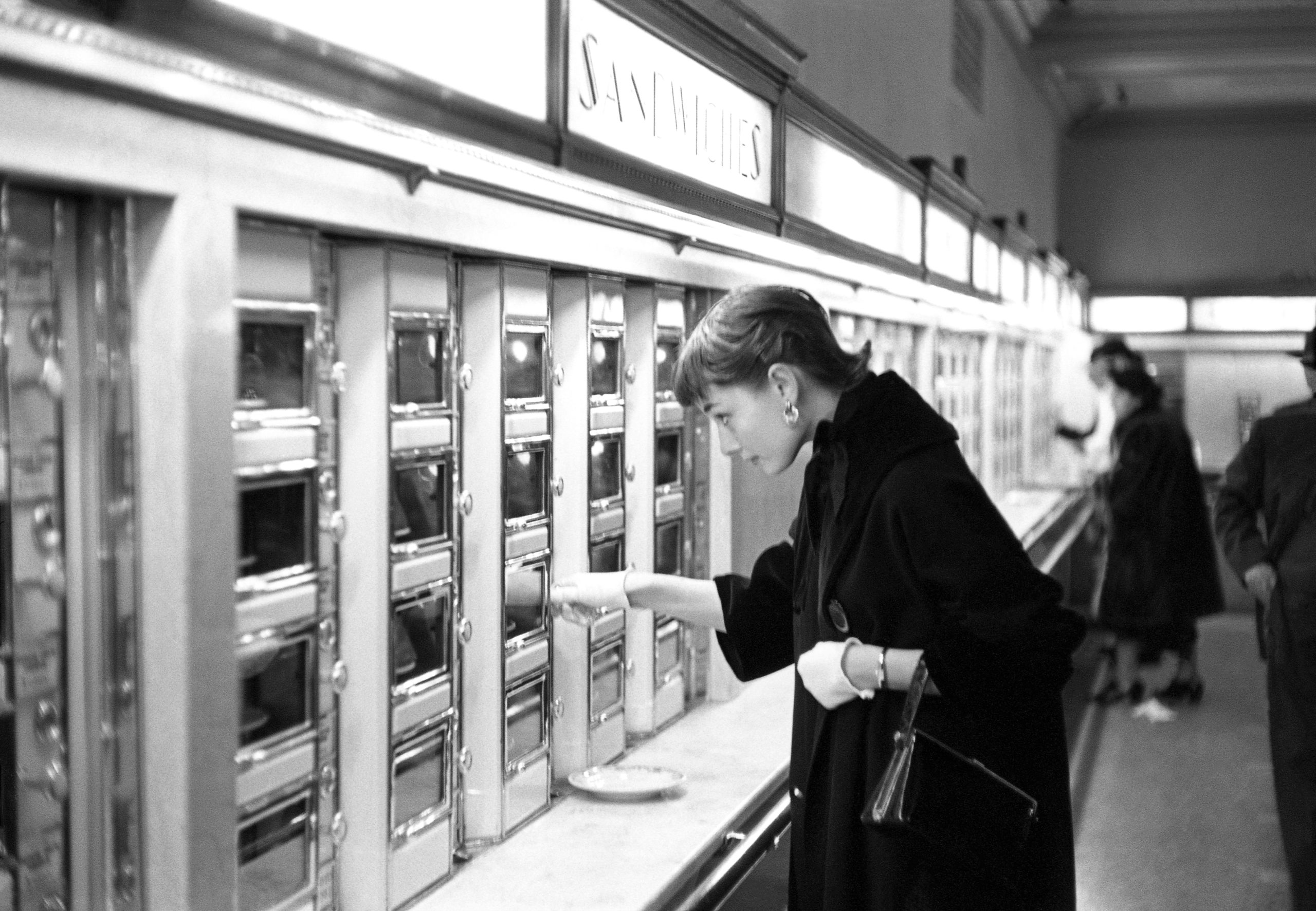
The concept of the cafeteria is, in its purest sense, an expression of egalitarian communal dining. People with different backgrounds can sit together, share a meal and effectively connect with their “community.”
It was this idea that initially hooked first-time filmmaker Lisa Hurwitz.
“I was fascinated by how my classmates and I would sit together,” said Hurwitz in a recent interview, reflecting back on her time in college. “You could sit wherever you wanted, you could meet new people in the cafeteria and... the food was constantly rotating” with a variety of options.
“It just seemed like a very idealistic kind of utopian space.”
Her curiosity and idealism led her down a path researching the history of the cafeteria and ultimately landed her at the famous restaurant chain Horn & Hardart’s Automat. In her debut documentary, “The Automat,” Hurwitz recounts the lost history of this dining empire, which served quality food at affordable prices in a commissary-style setting for nearly a century. The film will be screened as part of the Hamptons Doc Fest on Saturday, December 4, at noon at the Sag Harbor Cinema.
After being introduced to the automats of Germany, Joseph Horn and Frank Hardart were inspired to open their first one in Philadelphia in 1902. Ten years later, they opened a second in New York City. At the height of their success, they had over 150 locations.
The Automat shaped casual dining in the 20th century by combining quality and convenience in an elegant setting, using state-of-the-art technology for the time. The self-service restaurants provided freshly cooked meals from vending machines that were back loaded from a kitchen. Customers could look through little windows showcasing different dishes, such as Salisbury steak, macaroni and cheese, or a slice of pie. Placing nickels or dimes into the coin slots adjacent to the selected item would open the window.
“The concept of the Automat, putting technology in the hands of the customers, was really something appealing,” said Hurwitz, noting that for many it was their first time using modern technology. “So it was really exciting. It was like a new iPhone.”
Horn and Hardart believed that inexpensive food should still be served in a dignified setting. The Automats were known for their sophisticated décor, featuring grand entrances and luxurious interior spaces with Carrara marble tables, windows framed in brass, and coffee dispensers with dolphin head spouts.
These gilded havens were also a great equalizer, welcoming everyone, including immigrants, the working-class, people of color and women — members of society who were often ignored or oppressed in that era.
In many ways, it was a “utopian place where people can feel like they have a second home... a reliable, wonderful place,” she said. “It doesn’t sound like a lot, but it really was. And even today we lack those kinds of places.”
Hurwitz spent eight years making this film, uncovering memorabilia and interviewing dozens of celebrities who wax nostalgic about this modern marvel of the time. One of the most prominent among them is comedian and writer Mel Brooks, who spoke affectionately about his days eating at the Automat and who composed a song, “(There Was Nothing Like The Coffee) At the Automat.” This music serves as the theme song for the documentary.
Other notable interviewees included Supreme Court Justice Ruth Bader Ginsburg, who did her homework there after school; Secretary of State Colin Powell, who went to the Automat regularly with his family; and Starbucks founder Howard Schultz, who talks about how the restaurant chain inspired his prolific company. Horn and Hardart family members and key employees also share stories of their unique history with the company.
Despite Horn & Hardart’s reputation for serving good food in a welcoming place, and for treating its employees with fairness, it would face a decline in popularity in the second half of the 20th Century.
Following World War II, costs began to rise, and the Automat doubled the price of its beloved coffee from a nickel to a dime. The public was outraged and sales began dropping. Eventually, that combined with the rise of fast food chains, and the company’s inability to keep pace with the tastes of a changing country, left the Automat fading into the collective background. The last one, on 42nd Street and Third Avenue in New York City, closed in 1991.
“I think it was the changing culture that led to their demise and the rise of fast food was a result of the changing culture. The world had changed, they hadn’t adapted quickly enough,” said Hurwitz. “They hadn’t foreseen it.”
There have been a few attempts to revive the automat-style eatery, but so far, none have captured the public’s attention quite the way Horn and Hardart did.
Hurwitz’s documentary is a valentine to an institution that charmed its customers and employees and offered a safe haven for the downtrodden. But it is also a message of encouragement to embrace the compassion the company was modeled on.
Through her film, Hurwitz hopes “that people will feel a sense of idealism and a sense of nostalgia... a desire to bring back those values of companies taking care of people and making good food affordable, and all of us being in it together.”
“The Automat” runs 79 minutes and will be screened at Hamptons Doc Fest at noon on Saturday, December 4, at Sag Harbor Cinema, 90 Main Street, Sag Harbor. For tickets, visit hamptonsdocfest.com.